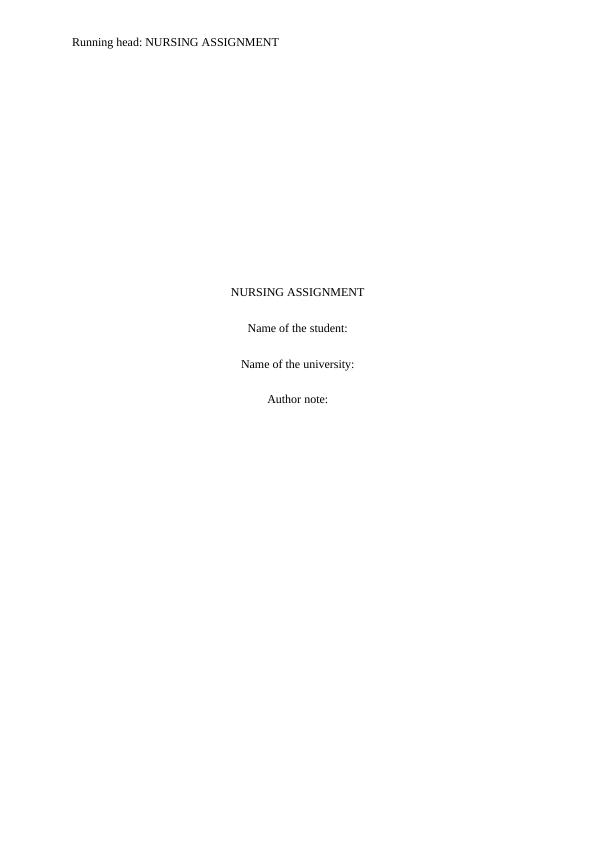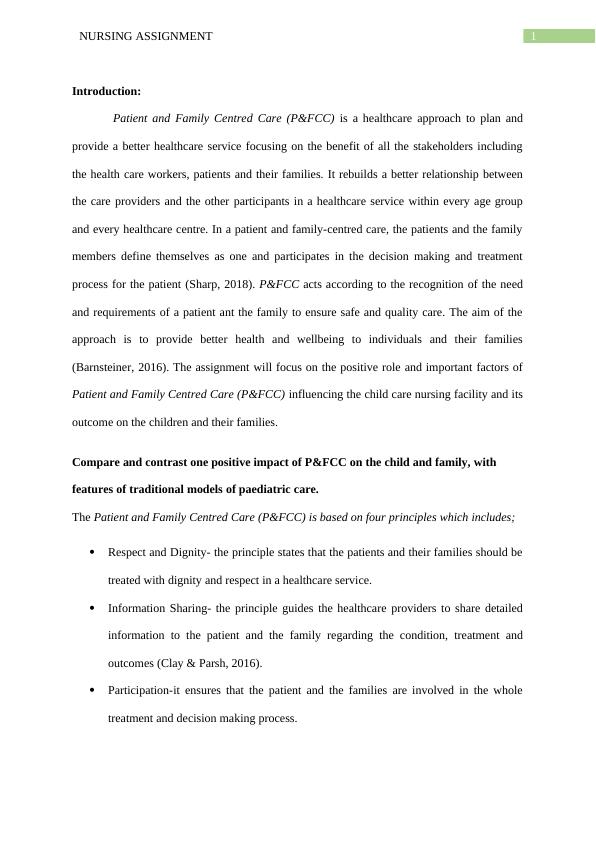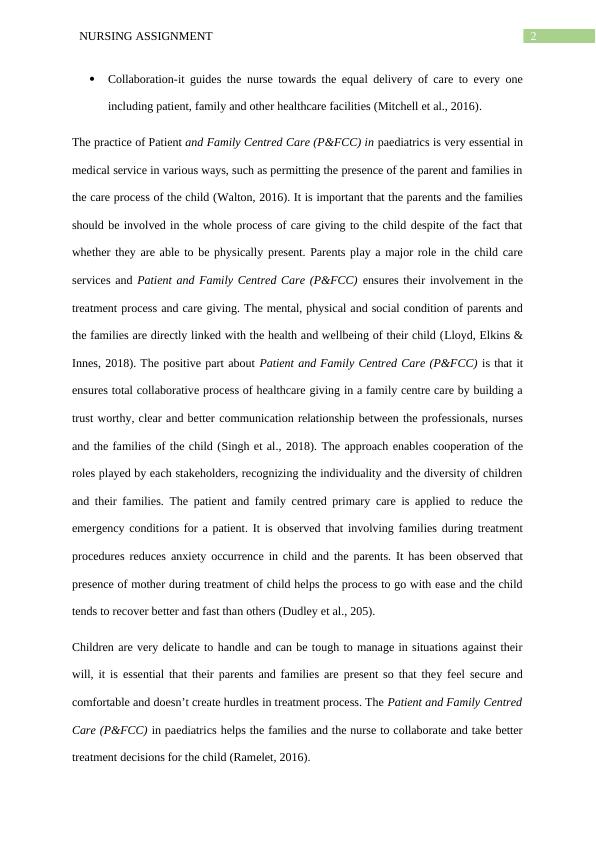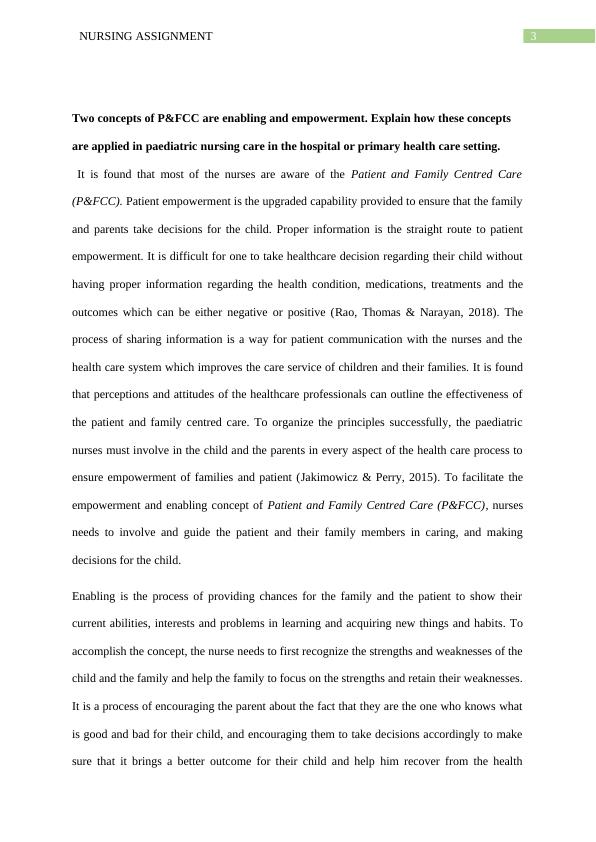Positive Impact of Patient and Family Centred Care on Child Care Nursing
Comparing and contrasting the positive impact of P&FCC on the child and family with traditional models of paediatric care, explaining the concepts of enabling and empowerment in paediatric nursing care, and applying P&FCC principles to nursing care in two case studies.
11 Pages3126 Words44 Views
Added on 2023-01-18
About This Document
This assignment focuses on the positive impact of Patient and Family Centred Care (P&FCC) on child care nursing and compares it with traditional models of pediatric care. It discusses the principles of P&FCC and how they are applied in pediatric nursing care. It also explores strategies to reduce the negative effects of hospitalization for children and their families.
Positive Impact of Patient and Family Centred Care on Child Care Nursing
Comparing and contrasting the positive impact of P&FCC on the child and family with traditional models of paediatric care, explaining the concepts of enabling and empowerment in paediatric nursing care, and applying P&FCC principles to nursing care in two case studies.
Added on 2023-01-18
ShareRelated Documents
End of preview
Want to access all the pages? Upload your documents or become a member.
Impact of P&FCC on Family & Child
|12
|3110
|160
Principles of Patient and Family Centred Care
|10
|3237
|170
(Doc) Family Centred Care Assignment Solution
|10
|3212
|326
Patients and Family Centred Care
|10
|2924
|53
Family-Centered Care
|7
|2030
|62
Patient and Family-Centered Care: A Comparative Study with Traditional Model
|12
|3327
|128




